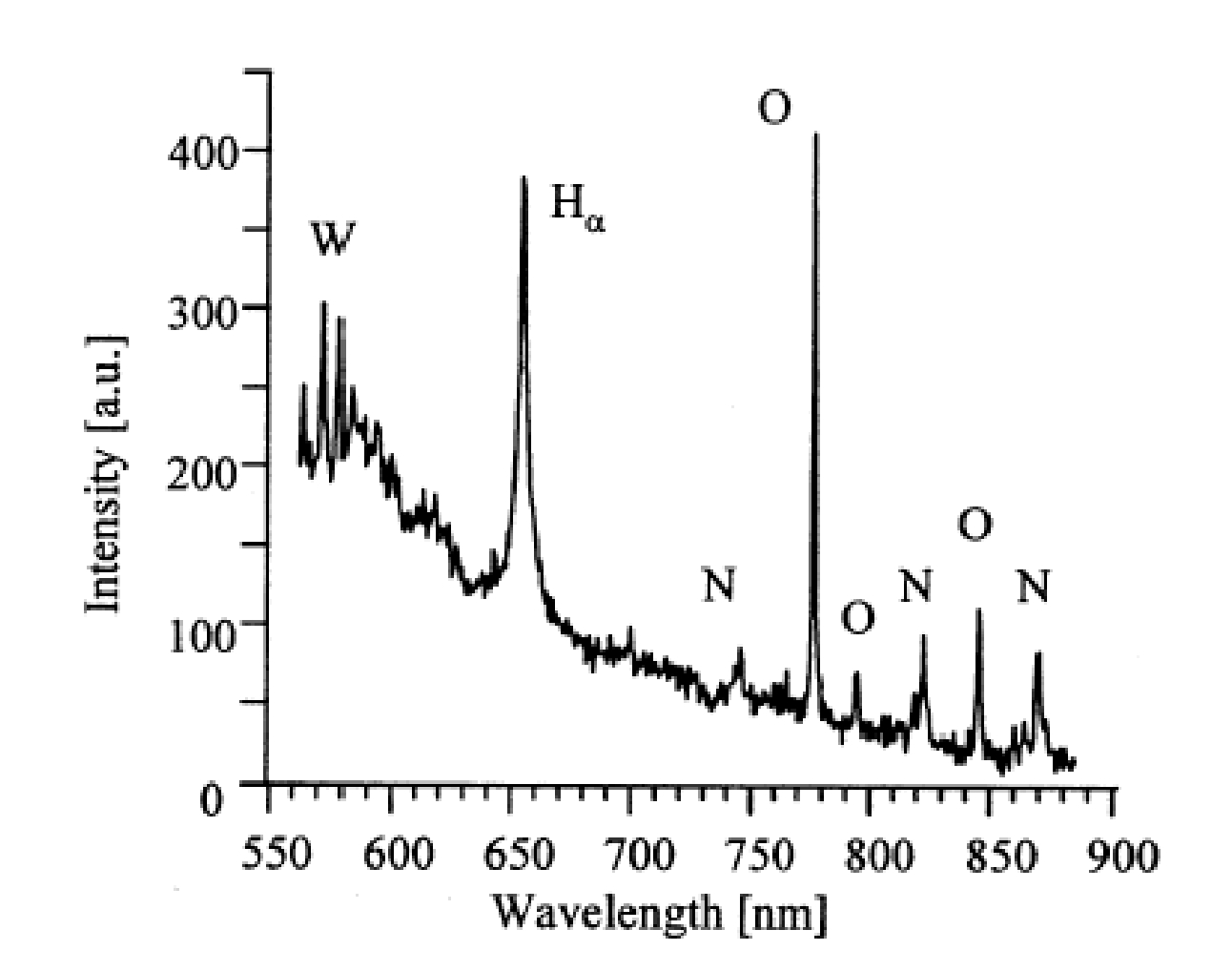
|
BRHS /
Radiation Emissions from Intermediate Radicals and Atoms in Hydrogen Flames A typical spectrum of laser induced plasma spectroscopy (LIPS) in a hydrogen-air flame for wavelength range of 550-900 nm ([[http://www.hysafe.net/wiki/BRHS/RadiationEmissionsfromIntermediateRadicals?action=bibentry&bibfile=DB&bibref=ItohS:2001 | ItohS:2001)]] The combustion chemistry of hydrogen flame gives rise to H, O and N atoms, and OH radicals, which emit specific peaks at specific wave lengths. The typical emission spectrum of the laser-induced plasma spectroscopy (LIPS) formed in hydrogen-air flame in the infrared region is shown in the figure, and their wavelengths are listed in the table. LIPS is a promising method that enables spatially resolved elemental analysis of various chemical species based on their atomic emissions. The spectrometer was set to be centred at a wavelength of 720 nm so that atomic emissions of hydrogen H, nitrogen N, oxygen O, and tungsten W could be observed simultaneously. The continuum spectrum is also observed with the emission lines, which is mainly due to the recombination of ions with free electrons. Table: Wavelength of each emission line (ItohS:2001)
More recently, (ChoudhuriAR:2004) have used laser-induced fluorescence (LIFS) technique for measurements of H atom near 656 nm (2s → 3p) O atom near 845 nm (3s 3S), and OH hydroxyl radical in the UV region near 315 nm. The OH radical is one of the important intermediates in the combustion reaction mechanism, which is a reliable indicator of the flame zone, flow structure and flame temperature near stoichiometry. Here, the flame temperature was determined by measuring the rotational energy distribution of the OH radical at the excitation of (1,0) band of (A2 Σ ← X2 Π) system. Please note that it is not possible to avoid interference of the photolytic production of O atom at the wavelength of 845 nm with the adjacent NO excitation band (1,1) of (A2 Δ ← X2 Π) system. Here the symbols s, p, d stand for the atomic orbitals and Σ, Π, Δ stand for the molecular orbitals. Maximum statistical uncertainties in measurements were estimated to be 20-30 K in the temperature range. Invalid BibTex Entry! << Radiation Characteristics | Content | Radiation Emissions from Water Vapor Bands >> |